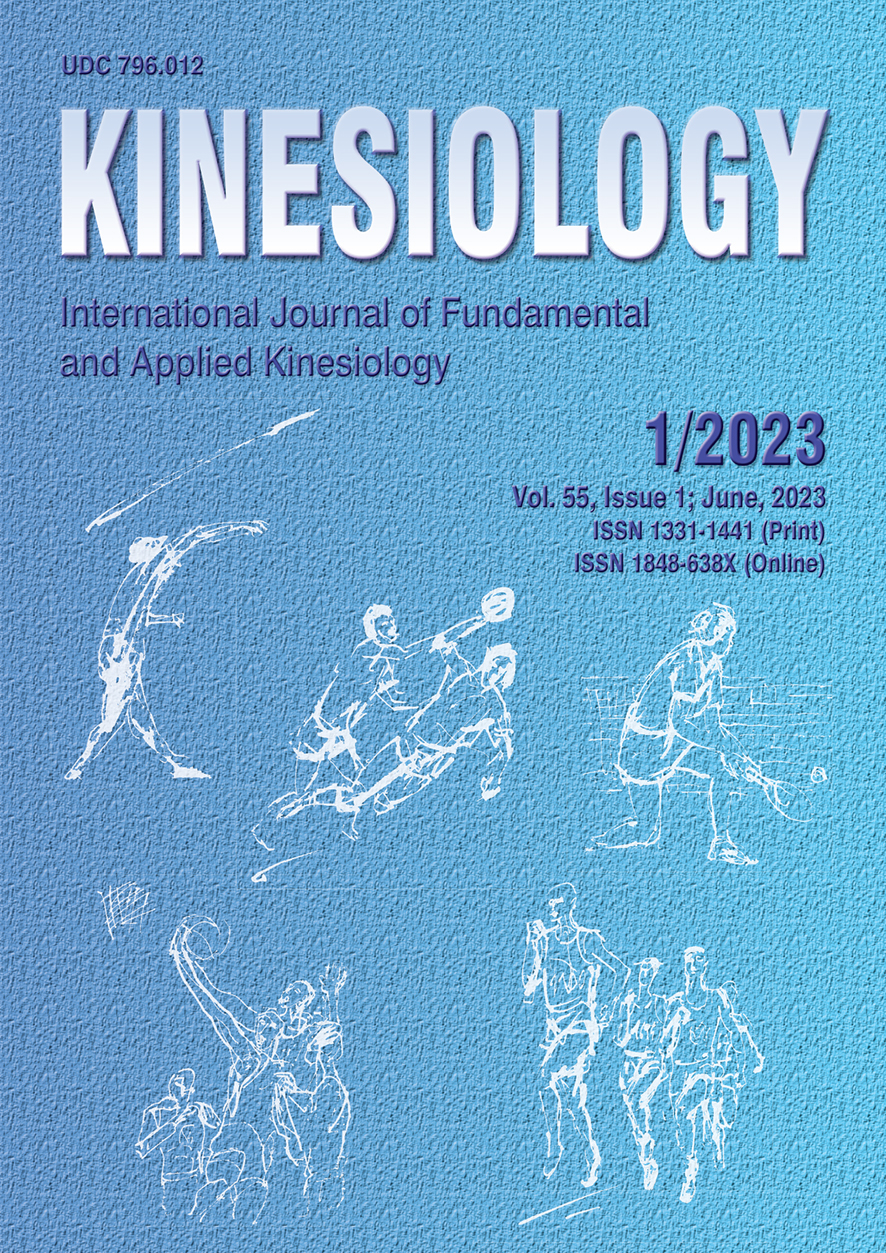UNSTABLE COMPARED TO STABLE CORE EXERCISES IMPROVE MUSCULAR ENDURANCE IN PREADOLESCENTS AND ADOLESCENTS: AN EIGHT-MONTH RANDOMIZED TRIAL
Abstract
Although previous studies have indicated the importance of a core strength and muscular endurance training in preadolescents and adolescents, there is a lack of evidence regarding effects of a long-term core training in unstable conditions. The purpose of this study was to compare the effects of core training in stable versus unstable body positions on core and upper body strength and muscular endurance in non-trained children aged 11-14 years. Participants were randomly assigned to either stable (SC, N=569) or unstable (UC, N=633) core-exercise group and assessed at baseline, after four, and eight months for sit-ups, dynamic trunk extension, static trunk extension, and push-ups. Repeated measures ANOVA, with time as a within factor, and exercise group, age, and gender as between factors, was employed for data analysis. Post-hoc comparisons showed greater absolute improvements after the eight-month training in UC compared to SC for all measures, age groups, and both genders (p≤.01), and greater relative improvements (differences in Cohen’s d between UC and SC ranged from 0.08 to 1.58), except for static trunk extension in 11- and 12-year-old participants. However, the differences between SC and UC in four-month effects were inconsistent. These results point out that core exercises in unstable compared to stable conditions have a greater capacity for long-term improvement of core and upper body strength and muscular endurance in non-trained preadolescents and adolescents.
Key words: children, resistance training, abdominal strength, lower back strength
Downloads
Published
How to Cite
Issue
Section
License

This work is licensed under a Creative Commons Attribution-NonCommercial 4.0 International License.
At Faculty of Kinesiology we recognize that access to quality research is vital to the scientific community and beyond. Kinesiology is non-profit journal and all costs of publishing and peer review process are covered by the publisher itself or other funding sources like Ministry of Science and Education of the Republic of Croatia. Full text papers are also available free of charge at http://hrcak.srce.hr/kineziologija. There are no restrictions on self archiving of any form of paper (preprint, postprint and publisher's version).
Articles are distributed under the terms of the CC BY - NC 4.0
Kinesiology does not charge any fees to authors to submit or publish articles in our journal.


